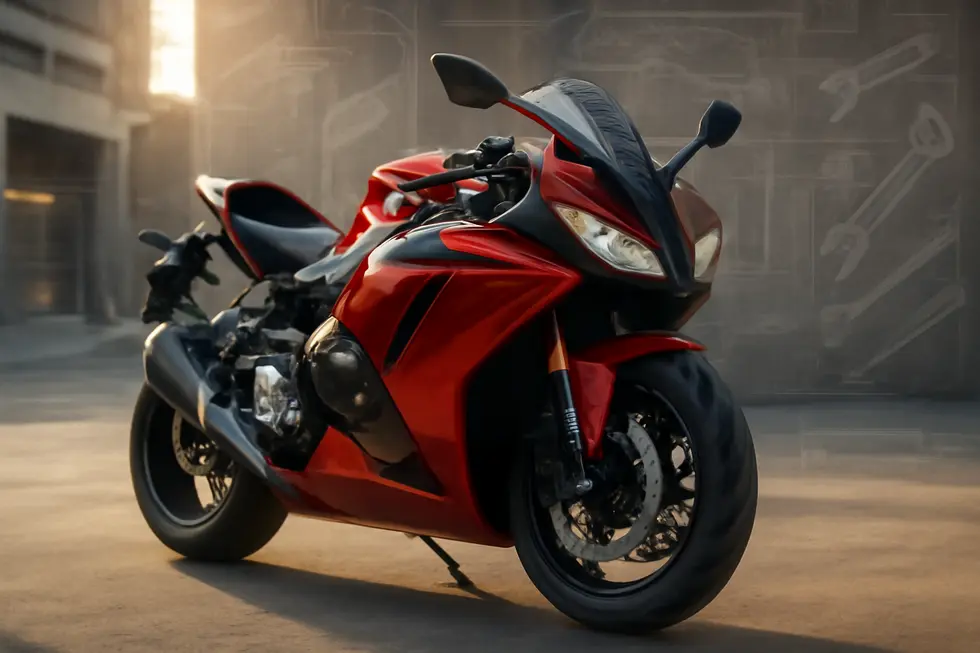Navigating Growth and Innovation in the Motorcycle Fairing Market
October 9, 2025 | by summitfairings
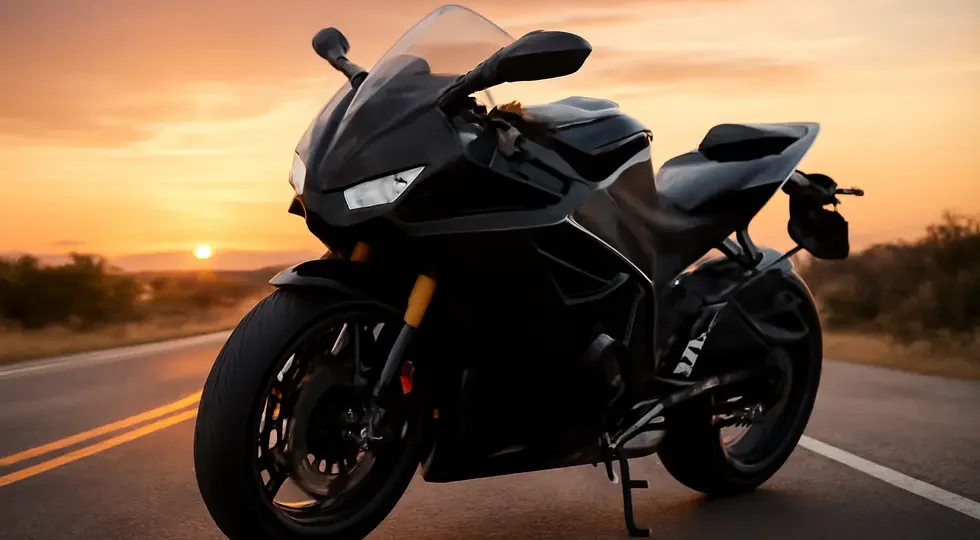
Introduction
The motorcycle fairing market stands at a pivotal juncture, propelled by the overall expansion of the motorcycle industry and evolving consumer demands. For business owners involved in this sector, understanding the segmentation between OEM and aftermarket fairings is essential to tap into diverse revenue streams. Equally important is keeping pace with technological innovations that reshape design and functionality, catering to modern riders’ expectations for smarter, more efficient motorcycles. Regional market behaviors and consumer preferences reveal opportunities and challenges tied to geographic and regulatory environments. Meanwhile, advances in materials and manufacturing techniques are redefining product quality, cost, and performance. Each chapter herein provides a focused exploration of these critical dimensions, delivering a comprehensive perspective that equips business leaders with actionable insights to thrive in the competitive motorcycle fairing market.
Tables of Contents
Chapter 1: OEM and Aftermarket Segments in the Motorcycle Fairing Market
- Precision and Reliability: Navigating Technical Standards and Quality Control in OEM and Aftermarket Motorcycle Fairings
- Economic Drivers Shaping Cost and Pricing Dynamics Within OEM and Aftermarket Motorcycle Fairings
- Balancing Precision and Personalization: Customization Trends in OEM vs Aftermarket Motorcycle Fairings
- Evolving Market Forces and Rider Priorities Shaping OEM and Aftermarket Fairing Demand
- Innovations Shaping OEM and Aftermarket Motorcycle Fairings for Tomorrow’s Riders
Chapter 2: Technological Innovations Shaping the Motorcycle Fairing Market
- Advanced Materials Transforming Performance and Durability in Motorcycle Fairings
- Advances in Manufacturing: Lightweight Materials and Smart Integration Driving Fairing Evolution
- Smart Digital Integration Transforming Motorcycle Fairings
- Driving Sustainability: Eco-Friendly Materials and Smart Technologies Transforming Motorcycle Fairings
- How Advanced Technologies Propel Growth and Performance in Motorcycle Fairings
Chapter 3: Regional Dynamics and Consumer Preferences Shaping the Motorcycle Fairing Market
- Geographical Influence on Demand and Design Trends in Motorcycle Fairings
- How Motorcycle Types and Customization Trends Shape Fairing Choices and Consumer Behavior
- Innovative Materials and Smart Designs Reshaping Regional Fairing Preferences
- Navigating Economic Pressures and Demand Shifts Across Regions in the Motorcycle Fairing Market
- How Regional Trends and Innovation Drive Growth in the Motorcycle Fairing Market
Chapter 4: Materials and Manufacturing Trends Transforming the Motorcycle Fairing Market
- Advanced Polymers and Composites Driving Innovation in Motorcycle Fairing Materials
- Cutting-Edge Materials and Manufacturing Breakthroughs Driving Modern Motorcycle Fairings
- Economic Forces Driving Material Innovation and Production in Motorcycle Fairings
- How Geopolitical and Regional Dynamics Influence Fairing Materials and Manufacturing Innovation
- Sustainability and Innovation: Environmental and Societal Forces Driving Fairing Materials and Production
Chapter 1: OEM and Aftermarket Segments in the Motorcycle Fairing Market
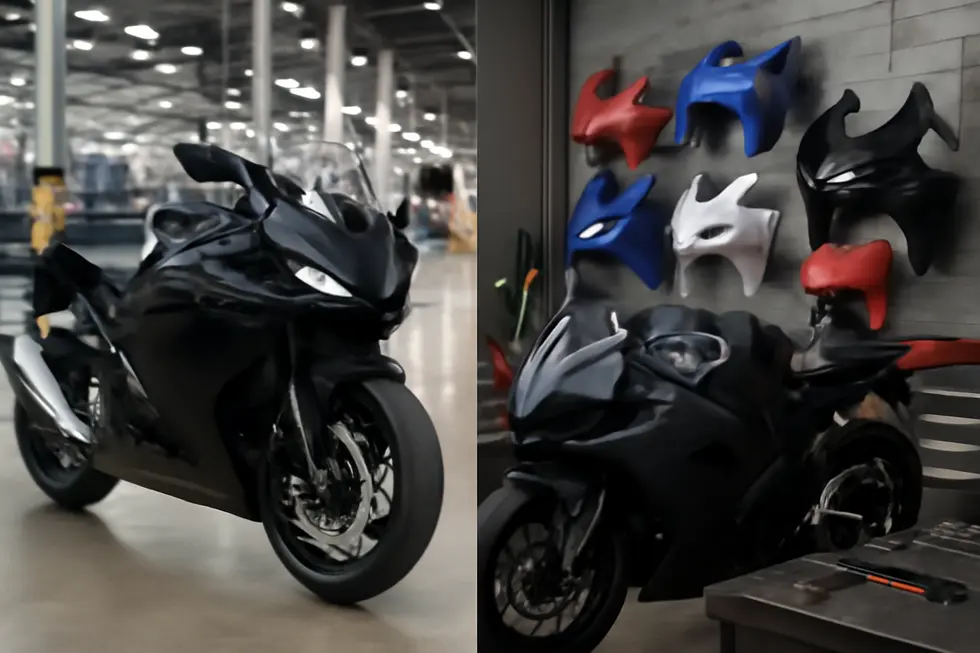
1. Precision and Reliability: Navigating Technical Standards and Quality Control in OEM and Aftermarket Motorcycle Fairings
OEM fairings are engineered to exact factory specifications, ensuring optimal fit, aerodynamics, and rider safety. Manufactured with high-grade materials like ABS plastics or composites, they undergo rigorous quality assurance including impact resistance, UV testing, and precise CAD-based fitment checks. This guarantees performance aligned with the motorcycle’s original design intent. In contrast, aftermarket fairings vary in technical standards. Some match OEM quality with similar or premium materials like fiberglass and carbon fiber, while others may sacrifice precision for affordability. Their fitment often depends on rider modification, as mounting points and dimensions can differ. Quality assurance in aftermarket segments is inconsistent; reputable brands conduct durability and ride tests, yet many budget options lack thorough evaluation, risking longevity and compatibility issues. Material choice impacts not only aesthetics but efficiency—lighter materials enhance battery efficiency on electric motorcycles, while durable plastics ensure protection. Buyers must carefully verify model compatibility and warranties to avoid costly errors. Understanding these technical and quality distinctions is crucial for selecting fairings that balance style, safety, and reliability. For a detailed exploration of aftermarket choices and quality standards, see our ultimate source for affordable motorcycle fairings.
2. Economic Drivers Shaping Cost and Pricing Dynamics Within OEM and Aftermarket Motorcycle Fairings
The economic landscape of the motorcycle fairing market reveals distinct cost and pricing trends between OEM and aftermarket segments. OEM fairings generally command higher prices due to the integration of advanced, lightweight materials and innovative designs tailored for electric and traditional motorcycles. These factors reflect manufacturers’ focus on performance optimization and product differentiation in competitive markets. Conversely, the aftermarket segment thrives on affordability and customization, offering riders accessible upgrade options. Pricing varies extensively based on material quality, design complexity, and brand credibility, enabling consumers to balance cost with desired aesthetics and functionality. Broader economic influences such as tariffs and increased production expenses impact both segments, often pushing prices upward. Suppliers must strategically navigate these pressures to sustain market share while meeting rising demand for fairings that blend durability, style, and rider protection. This complex interplay emphasizes cost-efficiency alongside innovation, shaping purchasing decisions and fueling the evolving motorcycle fairing ecosystem. For riders seeking a wide range of options and pricing insights, exploring affordable motorcycle fairings presents valuable opportunities to enhance their bikes.
3. Balancing Precision and Personalization: Customization Trends in OEM vs Aftermarket Motorcycle Fairings
Customization in the motorcycle fairing market reveals a striking contrast between the OEM and aftermarket sectors, reflecting divergent priorities and consumer needs. OEM fairings prioritize precision engineering to ensure exact fitment, regulatory compliance, and cohesive design aligned with a brand’s identity. Manufacturers offer limited color and style variations that sustain performance and safety, often collaborating with specialized partners to maintain rigorous quality standards. For example, these fairings support integrated technologies while adhering to evolving regulations. Conversely, the aftermarket segment thrives on expansive design diversity and personalization, appealing to riders desiring unique aesthetics or budget-friendly alternatives. These fairings come in a wide range of materials, styles, and finishes, often requiring adaptations for fitment but providing greater freedom for customization. Platforms offering extensive aftermarket kits enable enthusiasts to modify motorcycles beyond factory constraints. This duality ensures that while OEM fairings guarantee consistency and engineered reliability, the aftermarket fosters creative expression and tailored functionality for diverse rider preferences. For those exploring options, this dynamic is well captured in the varied selections of motorcycle fairings available, highlighting both precision and personalization in the market.
4. Evolving Market Forces and Rider Priorities Shaping OEM and Aftermarket Fairing Demand
The motorcycle fairing market is shaped by evolving consumer priorities and dynamic market forces that distinctly influence OEM and aftermarket segments. In the OEM arena, buyers increasingly seek motorcycles equipped with integrated safety technologies and sophisticated connectivity, favoring premium and sport models in established markets like North America and Europe. This elevates demand for factory-fitted fairings that marry aesthetic refinement with functional innovation, marking a shift towards motorcycles that reflect both performance and personal identity.
Conversely, the aftermarket segment thrives on customization and cost-efficiency, with riders pursuing visually striking fairings that also enhance aerodynamics. The desire for full-body kits and versatile styling solutions underscores a vibrant culture of personalization, where quality aftermarket parts boost both appearance and resale value. Broader industry trends, including electrification and economic considerations, drive fairing designs emphasizing lightweight materials and adaptability.
Together, these market dynamics reflect a dual narrative: OEM fairings respond to integrated technology and brand identity demands, while aftermarket fairings empower riders to tailor performance and style. For enthusiasts seeking diverse options, exploring the comprehensive offerings at Summit Fairings can reveal an unmatched range of quality and custom possibilities.
5. Innovations Shaping OEM and Aftermarket Motorcycle Fairings for Tomorrow’s Riders
The motorcycle fairing market is evolving with a strong focus on advanced materials, digital integration, and sustainable practices that impact both OEM and aftermarket segments. Modern fairings utilize durable polymers like ABS coated with UV protection, alongside emerging composites such as carbon fiber and recycled materials, delivering enhanced strength and reduced weight—key for improving performance and efficiency. Customization has become essential, with manufacturers providing modular fairings that support unique colors, finishes, and designs, meeting riders’ growing desire for personalization without compromising fit or durability. The rise of smart motorcycle features demands fairings that integrate sensors, displays, and aerodynamic elements to complement technologies like ABS and connectivity systems. Electrification accelerates the need for fairings adapted to battery cooling and optimized aerodynamics, while sustainability initiatives drive the adoption of eco-friendly materials and processes in production. Meanwhile, the aftermarket capitalizes on e-commerce platforms, offering riders streamlined access to both OEM-quality replacements and custom kits, inspiring continuous innovation fueled by direct consumer feedback. This convergence of material science, tech integration, and market accessibility ensures that fairings not only enhance aesthetics and protection but also align with the future of riding. For deeper insights into quality aftermarket options, visit the ultimate source for affordable motorcycle fairings.
Chapter 2: Technological Innovations Shaping the Motorcycle Fairing Market

1. Advanced Materials Transforming Performance and Durability in Motorcycle Fairings
Materials innovation plays a pivotal role in advancing motorcycle fairing technology by balancing strength, weight, and durability. Modern fairings increasingly rely on advanced polymers such as polyoxymethylene (POM), prized for its lightweight and robust properties, which also resist UV exposure, moisture, and chemicals. These materials enable fairings to endure harsh environments and constant vibrations without compromising structural integrity. The adoption of carbon fiber enhances performance by dramatically reducing weight while maintaining rigidity, contributing to more agile handling and improved fuel efficiency. Alongside materials, breakthroughs in polymer adhesives and nanotechnology deliver flexible, resilient bonds between components, critical for long-term durability in dynamic riding conditions. As electric motorcycles gain traction, the demand intensifies for aerodynamic, lightweight fairings that extend battery life and optimize efficiency. This shift encourages manufacturers to innovate continuously in both composition and design, supporting customization trends and integrating emerging technologies. To explore extensive options reflecting these advances, visit Summit Fairings’ comprehensive collections. Innovation in materials not only elevates performance but also underpins the evolving consumer desire for stylish, multifunctional fairings that safeguard riders and enhance every journey.
2. Advances in Manufacturing: Lightweight Materials and Smart Integration Driving Fairing Evolution
Motorcycle fairing manufacturing is evolving rapidly with the adoption of advanced materials and design innovations that redefine performance and aesthetics. Carbon fiber and technical fabrics dominate the landscape, offering exceptional strength-to-weight ratios that enhance both durability and rider experience. Increasing use of sustainable materials like recycled plastics aligns fairing production with environmental responsibilities, especially as the electric motorcycle segment demands lighter, more efficient components.
Manufacturers are embracing modular, customizable designs that respond to consumer preferences for personalization, driven by dynamic color schemes and body kits from aftermarket suppliers in regions such as China and Taiwan. Fairings now seamlessly integrate electronic control systems and sensors, reflecting the shift toward smart motorbikes equipped with ride-by-wire and traction control technologies.
Aerodynamic advancements focus on repositioning fairing edges to boost stability and reduce drag, supporting both high-speed performance and energy efficiency on electric models. These manufacturing innovations collectively enhance the synergy between form, function, and sustainability, pushing fairing design into a new era. For further insights on fairing options and evolving styles, explore the comprehensive resources available at your ultimate source for affordable motorcycle fairings.
3. Smart Digital Integration Transforming Motorcycle Fairings
The motorcycle fairing market is evolving as digital integration fundamentally changes fairing design and functionality. Modern fairings are no longer simple aerodynamic shells; they now incorporate advanced sensors, adaptive lighting, and smart connectivity features that elevate safety and rider experience. Adaptive lighting systems use real-time data from onboard cameras and inertial units to optimize illumination dynamically, enhancing visibility while reducing glare. Digital rider interfaces with high-resolution TFT displays provide seamless smartphone integration, GPS navigation, and customizable ride modes, enhancing usability and engagement. Aerodynamic efficiency benefits from computational fluid dynamics paired with integrated electronic rider aids like traction control, all embedded within fairings. Collaborative digital design platforms accelerate innovation by merging mechanical, electronic, and software engineering, enabling precise aerodynamic refinements. Additionally, additive manufacturing and digital prototyping enable tailored fairing components that support AI diagnostics and advanced driver-assistance systems. Altogether, these digital advancements redefine motorcycle fairings as smart, multifunctional components that enhance performance, safety, and rider connection, demonstrating the profound impact of technology on this dynamic market. For enthusiasts seeking explore the best motorcycle fairings at Summit Fairings offers comprehensive insights and options.
4. Driving Sustainability: Eco-Friendly Materials and Smart Technologies Transforming Motorcycle Fairings
Sustainability is increasingly integral to technological advances in the motorcycle fairing market. Manufacturers are prioritizing eco-friendly adhesives and coatings that extend component durability while reducing environmental impact. Lightweight, recyclable composites like carbon fiber have gained traction, improving aerodynamics and energy efficiency—especially vital as electric motorcycles rise in popularity. These fairings not only enhance performance but also align with stricter emission standards by minimizing weight and optimizing battery usage. Protective treatments such as UV-resistant ceramic sealants prolong fairing lifespan, reducing material waste from frequent replacements. Additionally, the integration of AI and connectivity technologies enables predictive maintenance, which cuts down on unnecessary repairs and emissions over a motorcycle’s lifetime. Combined, these innovations reflect a market-wide commitment to balancing cutting-edge design with environmental responsibility, driving forward a future where high-performance fairings also contribute to greener mobility. For insights on eco-conscious fairing components and technologies, see this comprehensive resource on sustainable motorcycle fairings.
5. How Advanced Technologies Propel Growth and Performance in Motorcycle Fairings
The motorcycle fairing market is rapidly evolving, driven by breakthroughs in materials science, aerodynamic engineering, and technological integration. Modern fairings employ lightweight composites, such as carbon fiber and advanced polymers, significantly reducing weight while enhancing strength and durability. This shift improves fuel efficiency, handling, and rider safety. At the same time, refined aerodynamic designs decrease air resistance, boosting top speeds and stability under diverse riding conditions. Moreover, the broader motorcycle ecosystem’s integration of AI, IoT, and communication technologies influences fairing development to accommodate sensors and hardware elegantly. Sustainably sourced materials and innovative manufacturing methods also align the market with environmental priorities, appealing to eco-conscious consumers. These combined advancements forecast an accelerating fairings market growth with stronger emphasis on performance, rider comfort, and sustainability. For riders and manufacturers alike, embracing these innovations means access to cutting-edge fairings that enhance style and function seamlessly with next-generation motorcycles. Explore deeper insights on the evolving marketplace and design innovations at Summit Fairings’ blog, a premier resource for motorcycle fairings and accessories.
Chapter 3: Regional Dynamics and Consumer Preferences Shaping the Motorcycle Fairing Market
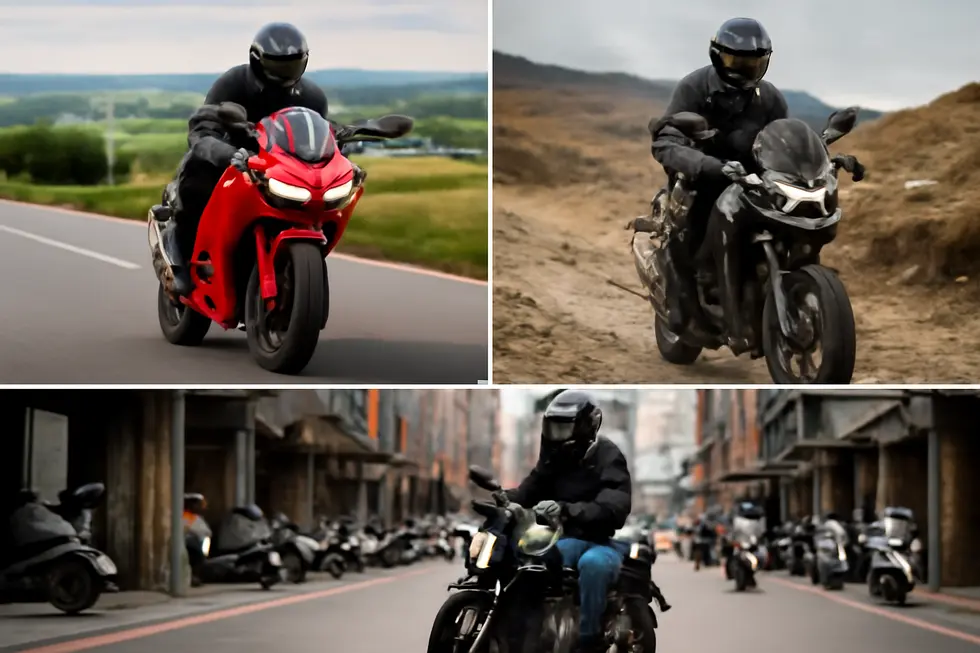
1. Geographical Influence on Demand and Design Trends in Motorcycle Fairings
The motorcycle fairing market exhibits distinct regional characteristics influenced by economic conditions, regulatory pressures, and rider preferences. In Asia-Pacific, the hub for motorcycle manufacturing, there is strong demand for affordable, reliable fairings leveraging advanced polymers like polyoxymethylene, driven by thriving local production and governmental support for innovation. Conversely, North America and Europe emphasize high-performance and sustainability; premium motorcycles favor lightweight, aerodynamic designs with specialty plastics aligning with strict environmental regulations. European markets particularly push for recycled materials, balancing cutting-edge technology and eco-consciousness.
Emerging markets show a preference for fully-faired commuter models offering a blend of efficiency and style tailored to urban riders, exemplified by cost-effective yet modernized designs. Japanese manufacturers respond by developing versatile platforms tailored to broad consumer segments, impacting fairing design with a focus on torque and regulatory conformity. Material selections vary accordingly—Asia’s supply chains enable quick, cost-sensitive production, while Western regions prioritize premium, certified materials. These geographical nuances shape an evolving market where adaptability to local demands is critical for success.
For insights on diverse fairing options tailored to varied preferences, explore affordable motorcycle fairings that meet both functional and aesthetic standards worldwide.
2. How Motorcycle Types and Customization Trends Shape Fairing Choices and Consumer Behavior
Consumer preferences in the motorcycle fairing market are deeply influenced by motorcycle types and prevailing customization trends, which together guide buyer behavior. Sportbikes attract riders favoring aerodynamic, performance-driven fairings that blend style with functional airflow enhancement. Meanwhile, the expanding adventure motorcycle segment demands rugged, protective fairings designed for versatility and durability across diverse terrains. Commuter motorcycles generally lean toward practical, cost-effective fairing solutions prioritizing comfort and utility.
Customization plays an increasingly pivotal role, with modular and accessory-based fairing kits allowing riders to personalize their motorcycles according to riding style and specific needs—whether off-road, touring, or urban use. This personalization trend is supported by growing digital engagement, as consumers use online platforms to explore and purchase customized fairings with greater convenience and choice.
Advancing emission regulations and the rise of electric motorcycles further influence fairing design, promoting lightweight, innovative materials that enhance efficiency and comply with evolving standards. These interrelated factors create a dynamic market where consumer choices reflect a balance of motorcycle type, functional demands, and personalization preferences. For riders seeking diverse and tailored fairing options, exploring the best motorcycle fairings at Summit Fairings offers extensive insights and selections.
3. Innovative Materials and Smart Designs Reshaping Regional Fairing Preferences
Technological advancements and evolving design philosophies are pivotal in shaping regional preferences within the motorcycle fairing market. The adoption of lightweight, durable materials such as advanced polymers and carbon fiber enhances both the performance and aesthetics of motorcycles, addressing varied rider demands globally. These innovations cater to regions emphasizing speed and agility, as well as areas requiring rugged, terrain-adapted solutions. Simultaneously, the integration of smart elements like digital consoles and LED lighting meets consumer desires for enhanced functionality and connectivity, elevating the overall riding experience.
Furthermore, electric motorcycles are driving demand for specialized fairings that optimize aerodynamics and energy efficiency without compromising style. Consumer interest in customization fuels a market for versatile fairing options that blend practical protection with personalized design. Regional market dynamics reflect these trends, as cultural, environmental, and economic factors influence the balance between technology, style, and durability. For riders seeking both cutting-edge innovation and tailored aesthetics, these technological and design trends are defining the future landscape of motorcycle fairings.
For a deeper understanding of how consumer choices energize this evolving market, explore the comprehensive insights available at Summit Fairings.
4. Navigating Economic Pressures and Demand Shifts Across Regions in the Motorcycle Fairing Market
The motorcycle fairing market is uniquely shaped by economic pressures and regional demand fluctuations. Inflation, tariffs, and shifting tax policies directly influence purchasing power, affecting both new motorcycle sales and accessories like fairings. For instance, a notable sales decline in the U.S. reflects how economic volatility causes consumers to postpone non-essential upgrades. Regional characteristics further complicate this landscape: Southeast Asia and South America favor durable and versatile fairings suited to rugged terrains, while mature markets in North America and Europe lean toward sportier, style-driven options. Additionally, evolving consumer priorities—such as sustainability and affordability—are altering typical demand patterns, especially as the pre-owned motorcycle segment expands. Specific markets illustrate these trends vividly; lower interest rates in South Africa have accelerated purchase decisions, while regulatory shifts in Italy led to a drop in fairing-equipped motorcycles despite overall sales growth. Such economic and cultural intricacies compel manufacturers to adapt designs and pricing strategies to meet diverse, evolving regional needs. For deeper insights into how evolving preferences influence fairing choices worldwide, explore resources on affordable motorcycle fairings.
5. How Regional Trends and Innovation Drive Growth in the Motorcycle Fairing Market
Regional dynamics and evolving consumer preferences significantly shape the motorcycle fairing market’s future. In emerging areas like Southeast Asia and South America, rising interest in electric motorcycles and rugged off-road styles reflects the demand for sustainable, versatile designs. Meanwhile, India’s expanding urban scooter market, fueled by a growing female workforce, creates opportunities for fairings tailored to both aesthetics and practicality. Contrastingly, the U.S. market reveals a shift from supersport dominance toward value-driven brands, urging fairing manufacturers to blend performance with affordability.
Innovation plays a crucial role in responding to these regional demands. The use of advanced composite materials enables production of lightweight, durable fairings that adapt to electric and adventure touring motorcycles’ unique requirements. These innovations support both aerodynamic efficiency and rugged protection.
Digital platforms further transform market reach by enabling direct consumer engagement and personalized customization options. Online ecosystems, particularly in fast-growing markets like India, allow fairing suppliers to showcase diverse products quickly, aligning with changing preferences.
Together, these regional trends, material advancements, and digital sales channels create a dynamic environment for fairing market growth, meeting diverse rider needs worldwide.
Explore more on how innovation integrates with market demand in Explore the Best Motorcycle Fairings at Summit Fairings.
Chapter 4: Materials and Manufacturing Trends Transforming the Motorcycle Fairing Market
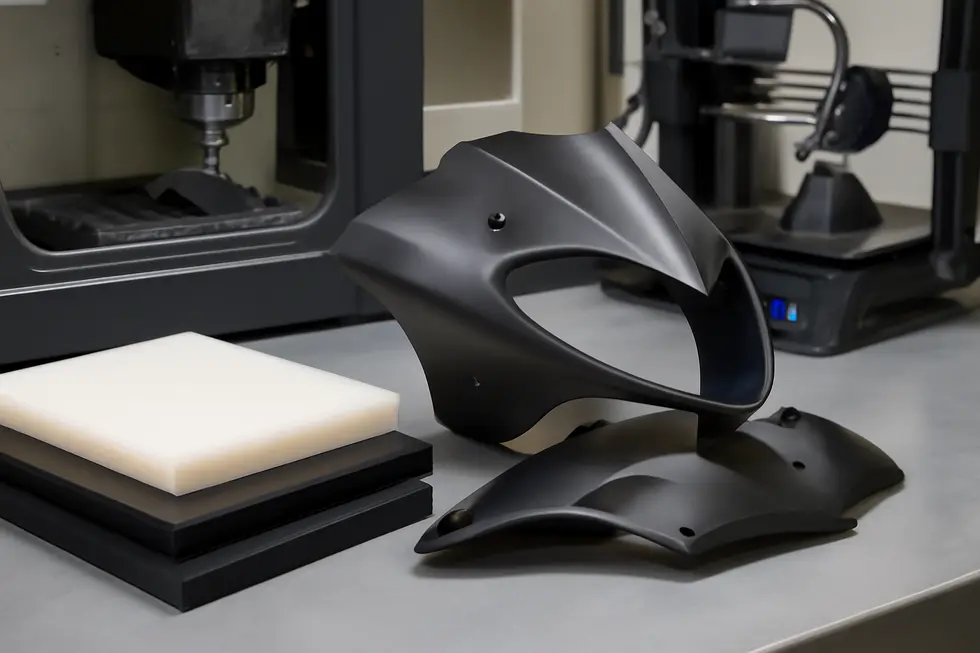
1. Advanced Polymers and Composites Driving Innovation in Motorcycle Fairing Materials
Motorcycle fairings have evolved significantly from traditional materials like ABS plastic and fiberglass to embrace advanced composites. Initially, ABS was favored for its lightweight, flexible nature and ease of manufacturing, making it a staple in OEM production. Fiberglass gained traction in aftermarket and racing niches due to its strength and moldability despite requiring more labor. Today, the market increasingly favors carbon fiber composites for high-performance sport bikes, prized for their exceptional strength-to-weight ratios, though cost remains a barrier for mass adoption.
The latest progression involves hybrid composites—carbon or aramid fibers embedded in thermoplastic matrices—enabling manufacturers to optimize strength, flexibility, and thermal resistance while maintaining efficient production methods. Innovations such as automated fiber placement enhance precision and reduce waste, borrowing aerospace techniques that promise future scalability. Complementing these material advances are modern adhesives with nanotechnology-enhanced polymers, providing durable yet flexible bonds that endure environmental stresses, thereby enhancing durability and repairability.
This material evolution aligns with rising consumer demand for lighter, more durable, and aerodynamically efficient fairings, supporting both cutting-edge technology integration and diverse riding styles. For more insights on custom manufacturing trends, explore this ultimate source for affordable motorcycle fairings.
2. Cutting-Edge Materials and Manufacturing Breakthroughs Driving Modern Motorcycle Fairings
The motorcycle fairing market in 2025 is increasingly shaped by breakthroughs in materials and manufacturing techniques focused on enhancing performance, weight reduction, and rider experience. Lightweight composites, such as advanced carbon fiber blends and polyoxymethylene, enable substantial weight savings—sometimes up to 30%—while maintaining durability and aerodynamic efficiency. This shift not only improves handling but also supports evolving electric motorcycle designs where material efficiency directly impacts battery range.
Innovative manufacturing processes now integrate aerodynamic winglets and structural fairings that work in harmony with electronic rider aids, including quickshifters and stability controls. Such integration demands precision engineering and versatile materials that accommodate embedded electronics without compromising rigidity.
Customization trends also influence material choices, with manufacturers offering coordinated color schemes and premium finishes adapted to consumer preferences for both functionality and style. Moreover, additive manufacturing is beginning to transform how fairings are prototyped and produced, allowing complex, tailor-made shapes unachievable through traditional methods.
Simultaneously, advances in composite chassis design, including glued carbon fiber frameworks, complement fairing innovations by reducing overall motorcycle weight and enhancing aerodynamic profiles. Regulatory shifts toward stricter emission standards further drive fairing redesigns to accommodate modern powertrains and emission controls while preserving performance and aesthetics.
Together, these manufacturing and material advancements propel the motorcycle fairing market toward a future where innovation aligns closely with rider demands and technological progress. For deeper insights into affordable and customizable options, explore the comprehensive selections available at Summit Fairings.
3. Economic Forces Driving Material Innovation and Production in Motorcycle Fairings
Economic factors strongly influence the materials and manufacturing techniques in the motorcycle fairing market. Rising costs of premium materials like carbon fiber limit their widespread use to high-end models, pushing manufacturers to explore advanced yet cost-effective composites. Macroeconomic challenges—such as fluctuating tariffs, currency exchange rates, and supply chain disruptions—add complexity to sourcing and production, prompting agile manufacturing adaptations. Meanwhile, government policies favoring environmentally friendly transport motivate the adoption of recyclable and lightweight materials, integrating sustainability with enhanced performance. Cutting-edge technologies like computational fluid dynamics and AI-driven design optimize fairing aerodynamics and reduce waste, albeit with significant initial investment considerations. As economic uncertainty tempers dealer margins, manufacturers balance innovation with cost control to meet evolving consumer demands, especially in growth areas like adventure and electric motorcycles. This dynamic environment fosters a continual evolution of fairing materials and processes, aligning economic realities with technical and ecological progress. For deeper insights on affordable options and varied designs, explore more at Summit Fairings’ dedicated insights portal.
4. How Geopolitical and Regional Dynamics Influence Fairing Materials and Manufacturing Innovation
Geopolitical tensions and regional market conditions deeply influence the motorcycle fairing industry’s materials and manufacturing trends. Trade policies, tariffs, and fluctuating supply chains, particularly between Asia and Western markets, prompt manufacturers to diversify sourcing and favor locally available materials like ABS plastics or advanced composites. Simultaneously, sustainability mandates in Europe and North America accelerate adoption of bio-based polymers that meet strict environmental standards, reshaping material innovation. Regional manufacturing hubs showcase distinct capabilities: Asia-Pacific’s integrated supply chains support cost-effective ABS production and electric motorcycle fairings requiring lightweight, durable designs, while Europe’s focus on premium sport bikes drives advanced composites use and UV-resistant finishes. North America embraces customization with flexible manufacturing to meet niche aftermarket demands. Moreover, emerging markets favor durable, affordable materials tailored for harsh climates, contrasting with developed markets’ preference for high-performance, aesthetically refined fairings using carbon fiber and polycarbonate. These patterns reveal how shifting geopolitical and regional influences not only shape raw material choices but also dictate manufacturing methods and innovation focus across the global motorcycle fairing landscape. For riders seeking customization aligned with these evolving trends, exploring tailored fairing options can provide both style and performance enhancements.
5. Sustainability and Innovation: Environmental and Societal Forces Driving Fairing Materials and Production
Societal demands for sustainability and environmental responsibility are redefining materials and manufacturing in the motorcycle fairing market. The global shift toward green mobility, fueled by electric motorcycle adoption and stricter emissions regulations, pushes manufacturers to prioritize eco-friendly, lightweight materials. Advanced composites, including recycled carbon fiber and bio-based resins, are increasingly integrated to reduce environmental impact without sacrificing performance or durability. Concurrently, production facilities are embracing lean manufacturing and energy-efficient technologies, as seen in new plants adopting automation and waste reduction to meet carbon neutrality goals.
Regulatory frameworks, especially stringent circular economy policies in regions like the EU, compel designers to create fairings optimized for recyclability and end-of-life reuse. This blend of consumer preference and government mandate drives innovation toward fairings that support both rugged adventure touring and electric sport bikes, balancing environmental responsibility with functional design. This evolution reflects a comprehensive industry trend where sustainability and advanced materials converge, ensuring motorcycle fairings contribute meaningfully to eco-friendly mobility’s future.
For further insights into evolving fairing materials and customization options, explore the extensive resources available at Discover Affordable Motorcycle Fairings at Summit Fairings.
Final thoughts
The motorcycle fairing market promises dynamic prospects for business owners who grasp its nuanced segments, innovative technologies, regional variances, and cutting-edge materials. By balancing engagement with OEM and aftermarket demands, embracing technological integration, adapting to global market shifts, and leveraging materials engineering, companies can secure a strong foothold in this expanding industry. As consumer preferences become more sophisticated and the industry pivots towards electrification and smarter motorcycles, fairings are evolving from mere protective shells to critical performance and style components. Forward-looking businesses that anticipate these trends and align their strategies accordingly will drive growth, differentiation, and lasting success in the motorcycle fairing market.
Ready to elevate your ride? Summit Fairings delivers premium, custom-fit fairings that blend style and durability. Whether you’re chasing speed or turning heads, we’ve got your bike covered. Don’t wait—transform your machine today. Click, customize, and ride with confidence. Your perfect fairing is just a few clicks away. Act now!
About us
undefined
RELATED POSTS
View all


